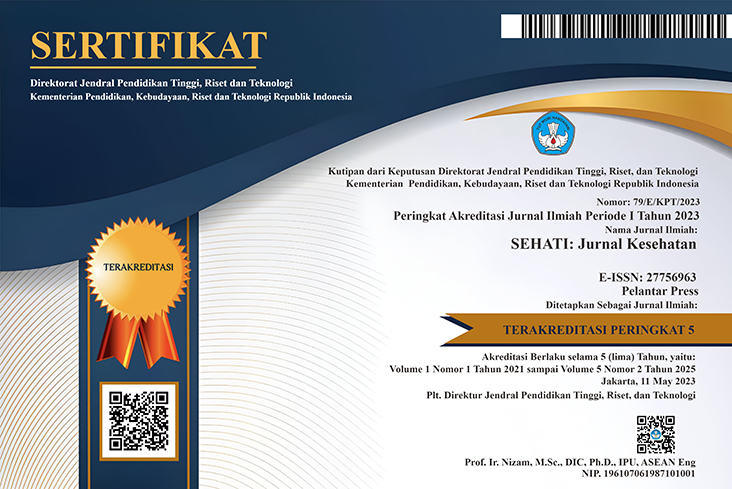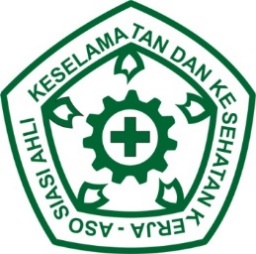Strategi Pengelolaan Limbah Bahan Berbahaya dan Beracun Fasilitas Pelayanan Kesehatan Rumah Sakit X Mandau
Abstract
Hospitals as health service institutions that carry out individual health services in a plenary manner, apart from having a positive impact, they also have a negative impact on the environment and public health by producing medical waste. As a health service provider, hospital managers are obliged to prevent environmental pollution and maintain public health. This can be achieved by carrying out proper and correct medical waste management in accordance with applicable regulations. X Mandau Hospital has implemented medical waste management even though it is not optimal and still has many shortcomings. This study aims to analyze medical waste management at X Mandau Hospital using a regulatory approach and the factors that are considered to influence medical waste management.This type of research is observational research by describing the medical waste management system from the input and process aspects to find out the problems that exist in medical waste management at X Mandau Hospital and to develop a medical waste management strategy based on factors that affect both internal and external use. SWOT analysis. The types of data used are primary data, secondary data and literature studies.    The results of research at X Mandau Hospital show that the stages in medical waste management are still not in accordance with applicable regulations. In the reduction and sorting stage, the storage stage and the processing stage, serious violations were found. With an average medical waste generation of 88.98 kg / day and with the inoperable condition of medical waste treatment equipment, Hospital X is considered to be facing serious medical waste management problems. The main problem found in the input aspect is the absence of good planning in the budgeting process for system development, operation and maintenance, this then has an impact on handling the generation of medical waste. In the process aspect, operational techniques that have not met the applicable regulations have resulted in conflicts with the community which have resulted in the rejection of incinerator operations. On the other hand, the incinerator operation itself has not yet obtained a processing permit from the authorized agency. To deal with this problem, the management strategy that can be taken is to carry out efforts to develop and improve medical waste treatment facilities utilizing government support, availability of human resources, budget, facilities and infrastructure as well as the availability of technology to then take advantage of opportunities for collaboration with other parties in medical waste treatment.
        Â
Keywords
Full Text:
PDFReferences
Adisasmito. (2008). Audit Lingkungan Rumah Sakit. Raja Grapindo Persada. Jakarta.
Dinas Lingkungan Hidup Kabupaten Bengkalis. (2015). Dokumen Upaya Pengelolaan dan Pemantauan Lingkungan RS X Mandau. Bengkalis.
W A Rutala, R L Odette, G P Samsa. (1989). Management of Infectious Waste by US Hospitals. International Journal. JAMA. 1989;262(12):1635-1640. doi:10.1001.
RS X Mandau. (2019). Profil Rumah Sakit Umum Kecamatan Mandau. Bengkalis.
RS X Mandau. (2019). Laporan Kinerja Instansi Pemerintah RS X Kecamatan Mandau. Bengkalis.
RS X Mandau. (2020). Laporan Bulanan Timbulan Limbah B3 RS X Kecamatan Mandau. Bengkalis.
RS X Mandau. (2020). Dokumen Perubahan Penggunaan Anggaran (DPPA) Tahun Anggaran 2020 RS X Kecamatan Mandau. Bengkalis.
RS X Mandau. (2020). Dokumen Rencana Kegiatan dan Anggaran (RKA) Tahun Anggaran 2020 RS X Kecamatan Mandau. Bengkalis.
RS X Mandau. (2020). Daftar Inventaris Peralatan Instalasi Sanitasi RS X Kecamatan Mandau. Bengkalis.
RS X Mandau. (2020). Log Book Limbah B3 TPS Limbah B3 RS X Kecamatan Mandau. Bengkalis.
DOI: https://doi.org/10.52364/sehati.v3i1.32
Refbacks
- There are currently no refbacks.
Copyright (c) 2023 Pelantar Press

This work is licensed under a Creative Commons Attribution-ShareAlike 4.0 International License.

Ciptaan disebarluaskan di bawah Lisensi Creative Commons Atribusi-NonKomersial 4.0 Internasional.




